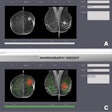
Do recent efforts at tort reform in Tennessee offer any lessons for the rest of radiology? That question was asked in an article published online May 3 in the Journal of the American College of Radiology. The authors offered a promising -- but also cautionary -- look at the state's effort to rein in medical malpractice costs.
Most radiologists would like to see reform in medical malpractice legislation: After all, radiology is consistently among the top 10 medical specialties named in malpractice suits. And medical malpractice is not just a provider-specific problem but a national one: Malpractice suits are estimated to cost $55.6 billion annually in the U.S., with $46.5 billion spent on malpractice defense, wrote the group led by Dr. Wes Angel of Memphis Radiological in Germantown, TN.
Yet efforts to enact tort reform across the U.S. have, for the most part, been ineffective, especially because the rules governing the practice of medicine tend to fall under the responsibility of individual states.
"Attempts at medical malpractice tort reform have been stymied by a strong and well-funded plaintiff attorney lobby, especially on the national level," the authors noted. "Concerns over the constitutionality of national malpractice law threaten to erode the broad support that any tort reform proposal would need to address an already highly controversial subject."
Local test case
With these very real political difficulties in passing national medical tort reform, it's important to analyze state malpractice data to get a sense of the progress and efficacy of any current tort reform legislation, according to the authors. To do this, they investigated the effectiveness of state reform using Tennessee as a test case, because the state has passed three pieces of legislation in the past decade.
Tennessee's tort reform legislation mandates the following:
- A claimant must provide notice of the intent to file suit at least 60 days prior to filing and provide the defendant with relevant medical records (enacted in 2008).
- A claimant must provide a certificate of good faith from an expert stating that the suit has merit (enacted in 2008).
- The cap for noneconomic damages for medical malpractice is $750,000 and the cap for catastrophic loss or injury is $1 million (enacted in 2011).
Angel and colleagues examined data from the Tennessee judiciary from 2006 to 2016 to determine what effect these reforms achieved. After the 2008 legislation, medical malpractice filings decreased, with the largest changes observed in 2009 and 2010, they found. After that, the number of filings remained relatively stable -- fewer than 400 claims per year -- from 2010 to 2015.
| No. of malpractice suit filings per year | ||
| Year | Filings | Percent change |
| 2006 | 584 | Reference year |
| 2007 | 537 | -8% |
| 2008 | 426 | -20.7% |
| 2009 | 324 | -23.9% |
| 2010 | 343 | 5.9% |
| 2011 | 374 | 9% |
| 2012 | 385 | 2.9% |
| 2013 | 376 | -2.3% |
| 2014 | 356 | -5.3% |
| 2015 | 391 | 9.8% |
As for the effect of the cap on noneconomic damages enacted in 2011, the data show that compensation did fall below the $100 million mark after that year. But the authors cautioned that this result should be taken with a grain of salt.
"It would be tempting to see a promising trend in these data ... but a direct effect of the cap would be impossible to prove or even assume for multiple reasons, including that the cap would only affect compensation by judgment, which was 4.4% of cases in 2014. The majority of compensation is paid by settlement and mediation, which is not directly affected by the cap."
Yes, there was a downward trend in Tennessee in the number of medical malpractice filings after the 2008 tort reform was enacted, suggesting that efforts to reduce frivolous suits were successful. But the effect of the noneconomic damages cap isn't as clear -- and these laws have been consistently challenged since they passed, according to the group.
There's still an uphill battle ahead when it comes to tort reform, the authors concluded.
"Despite the likely benefits from statewide medical malpractice tort reforms, including a reduction in frivolous cases and improved throughput through the court system, the laws have faced constant scrutiny," they wrote. "The future of malpractice law in Tennessee remains uncertain."



















